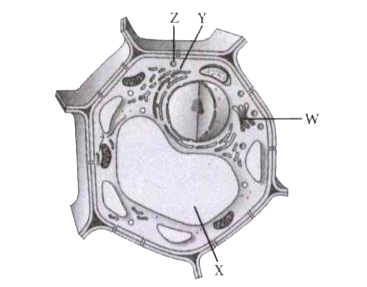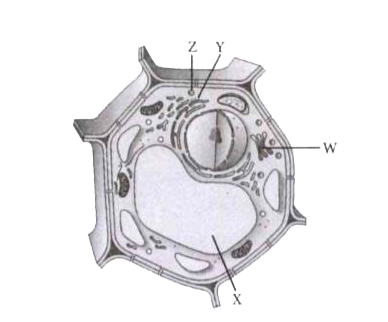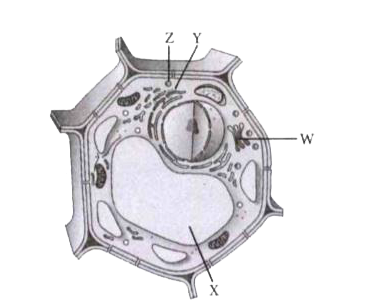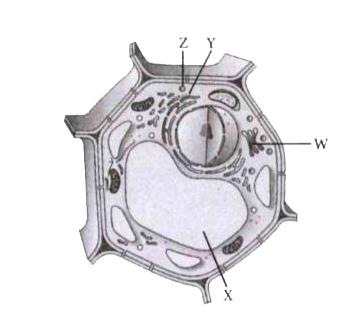Nuclear membrane and membrane bound cell organelles are absent in
Plasmodium
Streptococcus
Euglena viridis
Paramoecium caudatum
To determine which organism lacks a nuclear membrane and membrane-bound cell organelles, we need to analyze the options provided in the context of cell classification.
1. Understand the Classification of Organisms:
- Organisms are classified into five kingdoms: Monera, Protista, Fungi, Plantae, and Animalia.
- Monera consists of prokaryotic organisms, which do not have a well-defined nucleus or membrane-bound organelles.
2. Identify the Characteristics of Prokaryotes:
- Prokaryotic cells are characterized by the absence of a nuclear membrane and membrane-bound organelles.
- Examples of prokaryotes include bacteria and archaea.
3. Analyze Each Option:
- A. Plasmodium: This organism belongs to the kingdom Protista and is eukaryotic, meaning it has a nuclear membrane and membrane-bound organelles.
- B. Streptococcus: This is a genus of bacteria, which are classified under the kingdom Monera. Therefore, it is prokaryotic and lacks a nuclear membrane and membrane-bound organelles.
- C. Euglena viridis: This organism is also part of the kingdom Protista and is eukaryotic, possessing a nuclear membrane and membrane-bound organelles.
- D. Paramecium caudatum: This organism belongs to the kingdom Protista and is eukaryotic, thus it has a nuclear membrane and membrane-bound organelles.
4. Conclusion:
- The only organism from the options given that lacks a nuclear membrane and membrane-bound cell organelles is Streptococcus (option B).
Final Answer:
B. Streptococcus
- Organisms are classified into five kingdoms: Monera, Protista, Fungi, Plantae, and Animalia.
- Monera consists of prokaryotic organisms, which do not have a well-defined nucleus or membrane-bound organelles.
- Prokaryotic cells are characterized by the absence of a nuclear membrane and membrane-bound organelles.
- Examples of prokaryotes include bacteria and archaea.
- A. Plasmodium: This organism belongs to the kingdom Protista and is eukaryotic, meaning it has a nuclear membrane and membrane-bound organelles.
- B. Streptococcus: This is a genus of bacteria, which are classified under the kingdom Monera. Therefore, it is prokaryotic and lacks a nuclear membrane and membrane-bound organelles.
- C. Euglena viridis: This organism is also part of the kingdom Protista and is eukaryotic, possessing a nuclear membrane and membrane-bound organelles.
- D. Paramecium caudatum: This organism belongs to the kingdom Protista and is eukaryotic, thus it has a nuclear membrane and membrane-bound organelles.
- The only organism from the options given that lacks a nuclear membrane and membrane-bound cell organelles is Streptococcus (option B).
B. Streptococcus
Topper's Solved these Questions
Similar Questions
Knowledge Check
Membrane bound organelles are absent in
APlasmodiumBSaccharomycesCStreptococcusDChlamydomonasMembrane bound organelles are absent in
AStreptococcusBChlamydomonasCPlasmodiumDSaccharomyces.Membrane-bound organelles are absent in :
ASaccharomycesBStreptococcusCChlamydomonasDPlasmodium
An eukaryotic cell possesses true nucleus bounded by nuclear membrane. Other membrane bound organelles are also present in an eukaryotic cell.

Organelle Y is
View SolutionAn eukaryotic cell possesses true nucleus bounded by nuclear membrane. Other membrane bound organelles are also present in an eukaryotic cell.

The covering membrane of X is known as
View SolutionAn eukaryotic cell possesses true nucleus bounded by nuclear membrane. Other membrane bound organelles are also present in an eukaryotic cell.

Which of the following organelles contains hydrolytic enzymes?
View SolutionAn eukaryotic cell possesses true nucleus bounded by nuclear membrane. Other membrane bound organelles are also present in an eukaryotic cell.

identify W,X,Y and Z
View SolutionAn eukaryotic cell possesses true nucleus bounded by nuclear membrane. Other membrane bound organelles are also present in an eukaryotic cell.

Among the organelles W, X, Y and Z which one takes part in storage, modification and packaging of various materials?
View Solution